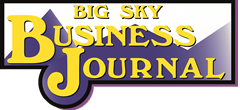By Evelyn Pyburn
In the name of freedom, the world around, we cannot let the events of Tiananmen Square be forgotten.
June 4 marked the 36th anniversary of the massacre at Tiananmen Square, of hundreds and maybe thousands of peaceful protesters. The exact death toll has never been released by the Chinese government, but some have suggested it was as high as 10,000, in part because after the event many were later executed.
For most of the world, the words “Tiananmen Square” instantly evoke the image of a lone man standing valiantly in front of a tank that leads a row of tanks into Tiananmen Square, where the Chinese dictatorship murdered peaceful protestors seeking greater freedom.
The protestors – largely Chinese college students, were totally unarmed. As the tanks entered Tiananmen Square, a lone, unarmed man, who had apparently been shopping, deliberately walked in front of the line of tanks, carrying two shopping bags.
A photographer, who was some distance away, snapped a picture at that moment – a picture that has since become widely heralded as the most famous picture in history. For millions of people around the world, just a glimpse of that iconic picture is instantly recognizable for the statement it makes. That lone individual, peacefully confronting the tyranny of a massive government military attack conveys an unmistakable and profound message to all who have ever struggled for freedom anywhere, throughout history. By simply standing peacefully, unarmed and determined, in front of such aggressors, this unidentified man made clear for all to see, the true nature of this enduring struggle.
It speaks to everyone – including the aggressors. For that reason the Chinese government has most forcefully and aggressively clamped down on all references and reminders of the incident in the hope that future generations of Chinese citizens will have no knowledge of the nature of their government and its dreadful actions on that day. Their efforts have been largely successful because most young people in China, today, are unaware of anything about Tiananmen Square.
As one Chinese reporter explained, since many of those who were involved or knowledgeable about the horrific event, have either died or are in their 70s and soon will be gone, it will indeed be up to the people in other countries of the world to keep the truth and the memory of Tiananmen Square alive. They must make sure it is never forgotten, because it is as sacred a day in the annals of human freedom, as any can be.
The reporter said, “Few dates are as difficult to say out loud in China as June 4,” adding that in the past few years the repression has increased.
Family members of those murdered were prohibited from mourning and have since been kept under constant surveillance by government officials. Their lives have been that of constant terror for 36 years. Each year as the anniversary date approaches, surviving family members of those who were murdered are required to leave their homes and go into seclusion so they are not accessible to journalists or other inquirers.
One of the unshakable things I read at the time about Tiananmen Square was from an observer who wrote that when the Chinese college students approached US journalists covering the demonstrations, to explain the reason they were demonstrating, they would frequently quote verbatim words from the US Constitution and other founding documents, only to have the journalists stare at them blankly – not recognizing the words they were hearing.
The journalists did not know that the Chinese college students were referencing American history and ideals. They did not understand that those young students knew more about the journalists’ history than they did. The journalists did not recognize that the Chinese students were trying to explain that they were carrying forth that same quest for individual liberty.
How appalling, and undoubtedly a foreboding of the current state of US media today.
Among the 70-year –old survivors, are those who formed a group called the Tiananmen Mothers, who have spent the past 36 years trying to keep the reality of Tiananmen Square alive. Realizing that for the most part younger generations in China do not know about the event, and as the membership of Tiananmen Mothers dwindles, they have resigned themselves to their failure and declared that in the future “reporting on the massacre will be limited to outsiders.”
So while their voices have been silenced that doesn’t mean the rest of the world must be silent. We can remember on behalf of those who have been silenced.






